The Ethics of AI in CLM: Who’s Accountable for an Algorithmic Contract Error?
In a world where Contract Lifecycle Management (CLM) is increasingly powered by AI, the promise of speed, consistency, and insight is compelling. But beneath that promise lies a thorny question: If the AI makes a mistake, whose fault is it? Is it the vendor, the in-house team, the user, or the algorithm itself?
In other words: Who’s accountable for an algorithmic contract error?
This article dives into that question, exploring ethical frameworks, real-world precedents, and practical steps you can take - before, during, and after a CLM deployment, to make accountability clear and enforceable.
We answer the title question up front: No algorithm can hold responsibility; accountability must lie with human actors - but getting that right requires thoughtful design, governance, and contract clauses.
When the Contract Betrays: Why AI Errors Happen in CLM
AI-powered CLM systems promise to automate drafting, clause-matching, risk scoring, obligation extraction, and compliance checks. Many modern systems embed natural language processing, machine learning, pattern recognition, and even agentic AI modules to “reason” about legal language..webp?width=300&height=300&name=Untitled%20design%20(51).webp)
But even the best AI tools are fallible. Here are common failure modes and contributing factors:
- Biased or skewed training data
If your AI was trained on a corpus of historical contracts that favor one party or systematically downgrade risk in certain jurisdictions, the model may reproduce those distortions. - Ambiguity in legal terms
Legal language is nuanced. Phrases like “material breach,” “reasonable efforts,” or “best endeavors” resist rigid interpretation. AI may misread context or miss implied meaning. - Edge-case scenarios
Unusual contract structures, rare clauses, or combinations of terms not present in training can lead the model astray. - Model drift and data shift
Over time, contract types, industry norms, or regulatory regimes change. If the AI isn’t retrained, its performance may degrade. - Overreliance on automation (too little human oversight)
End users may trust the AI blindly, skipping a necessary check or override. This is often called moral outsourcing: delegating responsibility to a machine rather than retaining human judgment. - Opaque “black box” reasoning
Many AI systems are difficult to interrogate. If an output is wrong, it may be hard to trace what led the system astray-which complicates accountability. - Vendor constraints or system defects
Bugs, version mismatches, or weak integration between modules may introduce errors independent of the AI model itself.
Because these failure modes are real, algorithmic contract errors are not hypothetical. Suppose your CLM mislabels a termination clause, miscalculates a penalty, or suggests a risky variation to a counterparty. The downstream consequences-from financial loss to legal exposure , can be significant.
Given that, we must ask: When such an error happens, how do we allocate blame or liability? That leads us to the next section.
Blame, Liability, and the Human in the Loop: Mapping Responsibility
To answer “who’s accountable,” we must map the human and organizational roles that touch the AI-CLM system - and assign clear responsibility lines. Below is a layered accountability structure:
Key Actors in an AI-CLM Ecosystem
- AI/Software Vendor
Designs and builds the model, defines features, maintains updates, and provides APIs or interfaces to clients. - Model Developers / Data Scientists
Those who choose architecture, features, hyperparameters, and training pipelines. - In-house Legal / Tech Team
The internal group responsible for selecting or customizing the CLM solution, integrating it with existing.webp?width=300&height=300&name=Untitled%20design%20(53).webp) systems, and validating outputs.
systems, and validating outputs. - End Users (Contract Managers, Legal Ops, Lawyers)
They interact with AI suggestions, review or override outputs, and issue final decisions. - Governance / Oversight Committee
Senior leadership, risk, compliance, and audit teams who set policies, monitor performance, and establish remediation steps. - Regulators / Courts / Legal System
External bodies that interpret laws and may assign liability in disputes.
Legal Lens: Algorithmic Contracts & Mistake Doctrine
A useful legal analog is the doctrine of mistake (especially in contract law) adapted for algorithmic scenarios. In a notable case from Singapore involving trading algorithms, the court held:
- The programmer’s state of mind at creation or modification of the algorithm matters, not the machine’s “mind.”
- If the programmer knew (or should have known) a scenario could lead to a mistake, liability can be imputed.
- Even after deployment, failure to stop or correct known errors can sustain liability.
Applied to CLM:
- If a vendor’s model design makes predictable misinterpretations (e.g. always misclassifies indemnity clauses in certain jurisdictions), the vendor may be partly liable if that flaw is foreseeable.
- If your in-house team recognized a systematic error but did not correct it or flag it to the vendor, some responsibility may lie with your team.
- End users who accept or publish a contract containing an AI error without review can be liable-especially if the error leads to downstream harm.
Therefore, liability is not binary - it is shared, layered, and context dependent.
Ethical Principles That Shape Accountability
To guide how accountability should work in practice, several ethical principles are relevant:
- Transparency & Explainability
Users must understand why the AI made a particular interpretation or suggestion. This enables oversight and challenge. - Auditability
Systems should keep versioned logs, traceability, and version control so that mistakes can be traced back to inputs, models, or decision points. - Human-in-the-Loop (HITL)
In high-risk or ambiguous cases, human review is mandatory. AI is a helper, not an autonomous decision-maker. - Redress Mechanisms & Appeals
If a contract is generated or approved based on AI but proves flawed, there should be a mechanism to reverse or compensate. - Governance and Ethics Boards
A governance layer (across legal, tech, compliance) should periodically review AI decisions, monitor error rates, and enforce accountability. - Inclusive Design & Bias Mitigation
Diverse teams reduce hidden blind spots and biases in both training data and decision logic.
Together, these principles help turn abstract notions of responsibility into concrete guardrails.
Who is Ultimately Accountable?
So: the algorithm itself bears no legal or moral responsibility. It is a tool.
True accountability must lie with human entities:
- Vendors can be accountable via strong contractual warranties, AI correctness SLAs (service-level agreements), indemnification clauses, and transparent versioning.
- In-house teams and end users remain accountable for oversight, validation, and risk acceptance.
- Governance committees enforce policies, monitor compliance, and provide recourse when problems emerge.
In short, ethical accountability must be codified in contracts, processes, and governance, so that when AI errs, it is not a mysterious “black box fault”-but a traceable, remediable pathway.
From Blueprint to Execution: Crafting Ethical, Accountable AI in Contracts
Understanding what should happen is one thing; implementing it is another. Here’s a practical, narrative roadmap to build accountable AI-driven CLM systems, avoid pitfalls—and respond well when (not if) errors occur.
Design & Vendor Selection (Before Deployment)
- Demand Explainability & Audit Logs
During vendor evaluation, include specifications that any AI output must be accompanied by rationale or feature attribution. The system must preserve logs of input contract, clause suggestions, version history, model.webp?width=300&height=300&name=Untitled%20design%20(52).webp) variant, and confidence levels.
variant, and confidence levels. - Request Ethical AI Certifications
Look for vendors that hold responsible AI certifications or that comply with recognized frameworks. - Insert Contractual Guardrails
Negotiate vendor contracts with:- Liability and indemnification clauses for model error or misclassification.
- Warranties of accuracy (target accuracy thresholds).
- Audit rights & access to logs, version snapshots, and model parameters.
- Change-control and update protocols (who controls updates, how testing is done).
- Termination or rollback clauses if error thresholds persist.
- Set Clear Human Oversight Zones
Define which contract types or severity levels require mandatory human review (for example, high-risk contracts, consumer-facing deals, cross-border deals). - Establish Governance & Ethics Oversight
Set up an AI governance board combining legal, technical, risk, and business stakeholders. Mandate periodic reviews, KPIs (error rates, override rates), and escalation paths.
Deployment & Monitoring (During Use)
- Maintain Version Control & Rollbacks
Every model update or retraining cycle should be recorded, with the ability to roll back to a known good version. - Track Key Metrics / KPIs
Monitor false positives, false negatives, override rates, user feedback, and near-misses. Use these as red flags for retraining or adjustment. - Audit and Continuous Review
Periodically audit a sample of contracts to detect pattern drift, systematic misclassifications, or bias. - Feedback Loops & Correction Mechanisms
Establish channels where end users can flag suspicious outputs, submit corrections, and feed back into the next training cycle.
Response & Remediation (When Errors Occur)
- Trace the Fault Line
Use logs to identify whether the error came from input preprocessing, model inference, vendor software bug, or user override. - Assess Responsibilities
Determine whether the error falls within the vendor’s warranty or is due to misuse, misconfiguration, or end-user override. - Compensate / Correct
Depending on severity, options include contract amendment, compensation to affected parties, or re-drafting with human correction. - Learn and Prevent
Include the incident in root-cause reviews, update training data, adjust thresholds, or restrict use in certain contexts. - Communicate Transparently
Stakeholders (internal and external) should be told about the error, the impact, and the remediation steps - this promotes trust and accountability. - Escalation Protocols
If a pattern of errors emerges, governance or risk teams should evaluate pausing or rolling back that model until resolved.
Best Practices & Ethical Norms
- “Society-in-the-Loop” mindset
Think of the algorithmic contract ecosystem not as a machine but as a social contract mediated by humans. AI should align with stakeholder values - fairness, privacy, transparency. - Interdisciplinary alignment
Ethics, legal, and technical teams should work together. Ethical charters, legal frameworks, and technical documentation must interweave. - Avoid “moral outsourcing” traps
Never treat AI as the moral actor. Users must remain vigilant, and organizations must resist viewing errors as “AI’s fault.” - Balance complexity with usability
A hyper-complex explainability system is useless if end users can’t interpret it. Strike a balance: enough detail to trace, but simple enough to apply. - Consider regulatory regimes
In many jurisdictions, laws (or future laws) may impose AI-specific liability, disclosure, or “right to explanation” obligations.
Final Thoughts
So, who’s accountable for an algorithmic contract error in CLM? The answer is: No algorithm is responsible - humans and organizations are.
Accountability must be designed deliberately across the lifecycle, from vendor selection to governance, deployment oversight, and remediation. Errors should not be black boxes; they must be traceable, auditable, and bound by contractual and governance guardrails.
In practice:
- The vendor must share responsibility via warranties, audit rights, update controls, and defect liability.
- Your in-house team and end users retain accountability for oversight, validation, and corrective action.
- A governance body must monitor performance, enforce policy, and manage escalation.
- Legal and regulatory systems will adjudicate disputes and set external limits on what’s permissible.
AI in CLM brings efficiency and power- but without clear ethics and accountability, it also introduces hidden danger. The future lies not in asking whether AI can replace humans, but how humans remain accountable, even when algorithms act.
Ready to adopt AI in your contract management without sacrificing control or accountability?
At Dock 365, we combine advanced AI capabilities with transparent, auditable governance. Let us show you how to build trust, reduce risk, and transform your CLM processes responsibly.
Book a Live demo
Schedule a live demo of Dock 365's Contract Management Software instantly.
.jpg?width=1260&height=1205&name=Image%20(2).jpg)
Written by Fathima Henna M P
As a creative content writer, Fathima Henna crafts content that speaks, connects, and converts. She is a storyteller for brands, turning ideas into words that spark connection and inspire action. With a strong educational foundation in English Language and Literature and years of experience riding the wave of evolving marketing trends, she is interested in creating content for SaaS and IT platforms.


